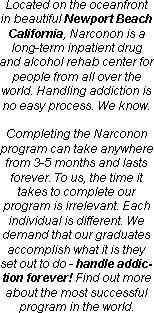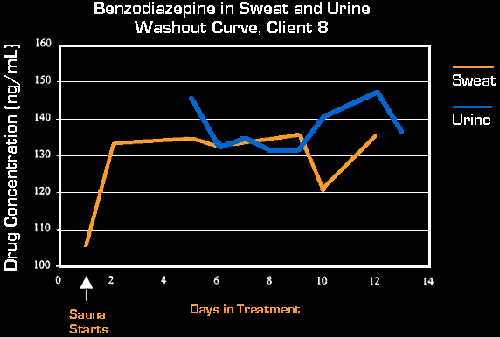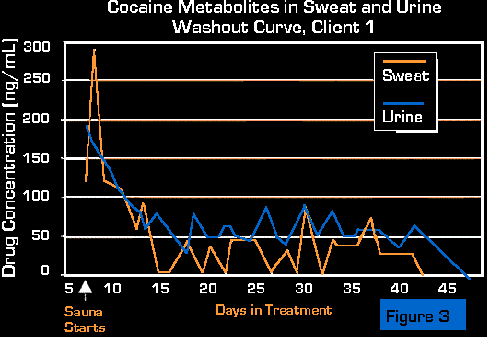
|
Navigate |
| Home |
| Kirstie Alley |
| Our 30th Anniversary |
| Never Turning Back |
| Narconon Endorsements |
| |
|
|
| |
|
|
| |
|
Facts About Drugs |
| FAQ About Ambien |
| FAQ About Ativan |
| FAQ About Cocaine |
| FAQ About Codeine |
| FAQ About Crack |
| FAQ About Darvocet |
| FAQ About Dexedrine |
| FAQ About Demerol |
| FAQ About Dilaudid |
| FAQ About Ecstasy |
| FAQ About GHB |
| FAQ About Heroin |
| FAQ About Hydrocodone |
| FAQ About Ketamine |
| FAQ About Lortab |
| FAQ About LSD |
| FAQ About Marijuana |
| FAQ About Morphine |
| FAQ About Meth |
| FAQ About Methadone |
| FAQ About Opiates |
| FAQ About Opium |
| FAQ About Oxycontin |
| FAQ About Percocet |
| FAQ About Percodan |
| FAQ About Ritalin |
| FAQ About Rohypnol |
| FAQ About Ultram |
| FAQ About Valium |
| FAQ About Vicodin |
| FAQ About Xanax |
  |
|
Resources |

|


 Print this article |  Send this article to a friend |  Add to Favorites |
Drug Residual Reduction
Applications
in Drug Rehabilitation
Megan Shields, M.D. Shelley Beckmann, Ph.D. and R.
Michael Wisner
Presented at the 123rd Annual Meeting of the American Public
Health Association
Abstract:
It is increasingly evident that the accumulation of drug residues and their lipophilic metabolites in the body plays a role in drug addiction. Such residues are associated with persistent symptoms and their mobilization from body stores into blood correlates with drug craving. A detoxification method developed by L. Ron Hubbard was specifically targeted at reducing levels of fat-stored chemical resides in the body and thereby alleviating the long-term effects of such compounds. We were interested in determining whether drugs were eliminated during this program and, if so, what types of symptomatic changes occurred as a consequence.
Concentrations of drug metabolites in both sweat and urine were measured in eight clients who had been actively using drugs prior to treatment with the Hubbard program. Treatment occurred at the Narconon drug rehabilitation center in Los Angeles. Cocaine, amphetamine, and benzodiazepine metabolites were detected by fluorescent immunoassay in both sweat and urine of these clients. Following start of treatment, metabolite concentration increased in either sweat or urine in five cases. In two cases the level of drug was below detection prior to treatment, but became detectable while doing the detoxification program. Drugs continued to be eliminated for up to five weeks.
A separate series of 249 clients with a history of drug abuse rated the severity of their symptoms before and after treatment with the Hubbard program. Prior to treatment their chief symptomatic complaints included fatigue, irritability, depression, intolerance of stress, reduced attention span and decreased mental acuity. These same symptoms were dominant in those who had ceased active drug abuse over a year prior to treatment. Following treatment, both past and current users reported marked improvement in symptoms with most returning to normal range. This detoxification program represents a vital innovation in drug rehabilitation: an approach aimed at a long-term reduction of the predisposition for drug abuse.


Introduction:
Residues of many drugs - including LSD, phencyclidine, cocaine, marijuana and diazepam - are known to accumulate in the body. These compounds may be retained for extended periods of time, and are especially abundant in long-term, hard core drug users.
Persistent symptoms associated with drug abuse often linger long after abuse has ceased. The consideration that accumulated residues may play a role in the persistence of symptoms led to the development of a program aimed at reducing levels of foreign compounds in the body and thereby assisting in the recovery of the individual.
This detoxification program is one component of the Narconon drug rehabilitation program. It has been empirically observed that clients are more alert and do better on the balance of the Narconon program after completing the detoxification component.
We were interested in evaluating the effects of the detoxification program on both the elimination of drug metabolites and the alleviation of symptomatic complaints. Therefore, we measured the levels of various drug metabolites in both sweat and urine over the course of the detoxification program in eight clients with long-term drug abuse problems.
We also monitored the change in severity of self-reported symptoms in a series of 249 clients with a history of drug abuse who were treated with this detoxification program.
Methodology Detoxification Program:
The detoxification program developed by Hubbard is aimed at mobilizing and eliminating foreign compounds, especially those stored in the fat. Components include:
(a) Exercise, preferably running, to stimulate circulation and enhance the turnover of fats.
(b) Prescribed periods in a low temperature sauna to promote sweating.
(c) An exact regimen of vitamin, mineral, and oil intake. Niacin in gradually increasing doses is used to transiently increase fat mobilization. Oil supplementation both reduces enterohepatic recirculation and promotes the exchange of fat. Vitamin and mineral supplements are included to replace vitamins, minerals and electrolytes lost during increased sweating and to correct any nutritional deficiencies.
(d) Sufficient liquids to offset the loss of body fluids through sweating.
(e) A regular diet including plenty of fresh vegetables.
(f) A properly ordered personal schedule which provides the person with the normally required amount of sleep.
Clients are on this program up to 5 hours per day, every day, until program completion. Daily aerobic exercise is followed by frequent periods in a low-heat (60-80 C) sauna. Niacin is administered immediately prior to the exercise and sauna to assist with the mobilization and elimination process. The program is pursued individually until a stable clinical improvement is achieved, generally from 4 to 28 days.
Treatment Population:
249 clients with a history of drug abuse rated the severity of their symptoms before and after treatment with the detoxification program. 87 symptoms were rated on a scale of 0 (none) to 5 (severe).
These clients could be divided into three subgroups:
(a) 59 clients who were doing the detoxification program as part of a drug rehabilitation program;
(b) 52 clients who had used drugs recently but were occasional drug users without marked addiction; and
(c) 49 clients whose last reported use of drugs was from one to ten years prior to the detoxification program.
Sample Collection for Drug Measurement:
Eight clients with a current drug addiction program agreed to contribute urine and sweat samples as they went through both withdrawal (if needed) and the detoxification program.
Four smoked cocaine almost daily and had been using cocaine from eight months to 18 years prior to treatment. Three were frequent users of amphetamines and valium (diazepam). One used cocaine and heroin.
Urine and sweat samples were collected on program entry and every two to three days during the detoxification program.
The
concentration of drug residues in urine and sweat samples was determined by the
polarized fluorescent immunoassay (PIF) technique at a 95% sensitivity of approximately
ng/ml.
Results Symptom Severity:
Clients reported the severity of symptoms both before and after detoxification treatment. Irritability, fatigue, depression, intolerance of stress, reduced attention span, decreased mental acuity, nervousness and impaired memory were the main complaints of these clients. (Table I)
Table
1
Symptoms Prevalent In Drug Users Self-Reported Symptom Severity
| Symptom |
All
Users | Current
Users | Past
Users |
| Fatigue |
2.5 |
2.7 |
2.3 |
| Stress
Intolerance | 2.3 |
2.7 |
2.2 |
| Decreased
Mental Acuity | 2.5 |
2.5 |
2.1 |
| Irritability |
2.2 |
2.8 |
1.8 |
| Reduced
Attention Span | 2.1 |
2.6 |
2.0 |
| Impaired
Memory | 2.1 |
2.3 |
1.9 |
| Depression |
2.0 |
2.7 |
1.5 |
| Nervousness |
1.8 |
2.4 |
1.4 |
| Lethargy |
1.7 |
1.9 |
1.2 |
| Recreational
Drug Use | 1.7 |
3.5 |
.06 |
| Sleepiness |
1.6 |
1.8 |
1.3 |
| Emotional
Instability | 1.6 |
2.1 |
0.9 |
| Alcohol
Use | 1.6 |
2.7 |
0.9 |
| Coffee
Use | 1.6 |
1.5 |
1.5 |
| Headaches |
1.5 |
1.7 |
1.4 |
| Confusion |
1.5 |
1.8 |
1.0 |
| Lumbalgia |
1.5 |
1.4 |
1.4 |
| Tobacco
Use | 1.4 |
1.8 |
1.3 |
| Muscle
Aches and Pains | 1.3 |
1.4 |
1.0 |
| Sleeplessness |
1.2 |
2.0 |
.08 |
The
symptom profile for current users is compared to the profile for past users in
Figure 1. Though the severity is higher for symptoms in current users, the complaints
overlap remarkably in the two groups. This strongly supports the concept that
persistent symptoms in the general population are related to past drug use.

Following treatment, the self-reported symptom severity improved markedly (Figure
2). The reduction in symptom severity was statistically significant for 80 of
the 87 symptoms, and highly significant for 74 of them, including each of the
chief complaints of this population.

Drug Metabolites in Sweat and Urine:
Drug metabolites were found in both sweat and urine for seven of the eight clients participating in this study. Five of the eight clients showed an increase in the concentration of drug metabolite in sweat or urine when the detoxification program was initiated.
Drug metabolites were not detected in the urine of two clients before the start of detoxification treatment but were detected after the program began. This supports the argument that drug metabolites were metabolized from stores.
Drug metabolites were detectable in both sweat and urine for up to five weeks following the start of detoxification treatment. (Figure 3)

Discussion:
The detoxification method developed by L. Ron Hubbard has previously been shown safe and effective in reducing levels of various chemicals in humans, including polychlorinated biphenyls and pesticides and in decreasing the adverse signs and symptoms associated with exposure to these chemicals.
Use of this detoxification program at Narconon is based on the premise that drug residues remain in body tissues long after active use has ceased and that these residues contribute to both persistent symptoms and the craving for drugs.
This study demonstrates that the detoxification program developed by Hubbard is effective in alleviating many of the symptomatic complaints reported by drug users.
Cocaine, amphetamine and benzodiazepine metabolites are found in both the urine and the sweat of individuals who have used these drugs as they undergo detoxification treatment.
Individuals report marked reductions in drug craving following this program.
Considering the high level of recidivism in drug users, the potential effects of drug residues on recidivism and the alleviation of these effects through detoxification, it becomes evident that detoxification treatment has broad application in the drug rehabilitation field.

comment corner
 |
| drug rehabilitation saving taxpayers |
California taxpayers are saving more money than expected due to ... |
 |
| Study: Marijuana Causes Lung Damage |
New research finds that smoking three or four marijuana cigarettes ... |
 |
| Thanks to Online Pharmacies, Addiction Can Be Just a Click Away |
WASHINGTON -- Kelly Knable, a 34-year-old mother of three from ... |
 |
| Balancing pain and drug addiction |
Over the past two decades, two conflicting medical ideas have ... |
 |
| Clean break |
... |
 |
| State officials create prescription drug abuse task force |
TALLAHASSEE, Fla. -- State officials on Friday announced the creation ... |
 |
| Florida system often fails to catch Medicaid abuse at source |
FORT LAUDERDALE, Fla. - (KRT) - The victim's skin was ... |
 |
| Marijuana's rising threat: For more kids, use turns into addiction |
John Brown experimented with marijuana at age 10, and it ... |
 |
| Student gets state prison term for selling marijuana |
EASTON -- David Messina had his whole life ahead of ... |
 |
| Man charged in cocaine case forfeits $585,000 |
An Iowa truck driver arrested by Kentucky Vehicle Enforcement officers ... |
 |
| Cocaine Curtails Body's Ability to Cool Off |
In addition to triggering life-threatening cardiovascular episodes, cocaine can be ... |
 |
| Science for Cops |
I admit it: I'm a Law & Order fan. ... |
 |
| New Gene Therapy Could Help Quell Alcoholic Cravings |
One prevailing view of addiction holds that alcohol and other ... |
 |
| One Dose of Cocaine Primes the Brain for Addiction |
It isn't a myth: one dose of cocaine is all ... |
 |
| Marijuana Firmly Linked to Infertility |
Scientists from the University of Buffalo have smoked out what ... |
 |
| Moderate Alcohol Consumption Clouds Brain's Ability to Detect Mistakes |
It's common knowledge that a brain on booze doesn't function ... |
|
Narconon Pictures |
|
   |
|